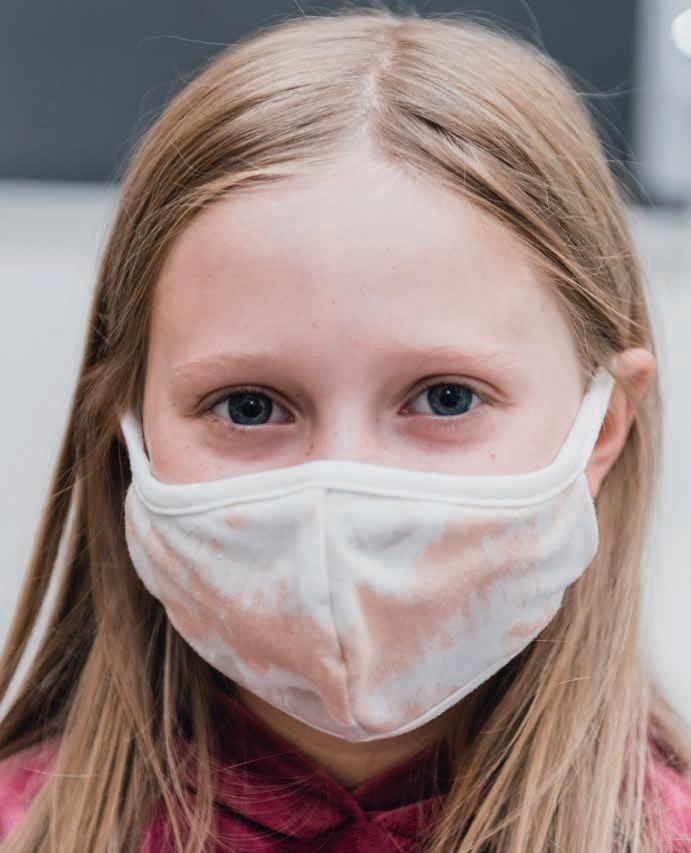EMERGENCY MEDICINE The Division of Emergency Medicine is committed to sustained, safe, normal operations through the pandemic and the future post-pandemic era. We achieve this through staying up to date on pandemic measures and evidence-based clinical decision-making. In addition to a robust clinical response to the Covid-19 epidemic, we participated and continue to participate in various counter measures to flex operationally during this challenging time. Our team has remained diligent in our regular contributions to teaching, clinical care, and research. This is seen in numerous division, institution, and external committees and advisory boards with regional through national audiences. Connecticut Children’s was awarded Magnet® status by the American Nurses Credentialing Center (ANCC) in 2019, and along with that honor, Magnet reviewers praised the Emergency Department for its low wait times.s In 2020, the Emergency Department of Connecticut Children’s treated 47,078 patients. This volume is reflective of a nationwide trend during the pandemic with sustained high acuity and mental health patients. The Division of Emergency Medicine is composed of 18 Pediatric Emergency Medicine (PEM) boardcertified/eligible fellowship-trained faculty, three per diem pediatric emergency medicine- and emergency medicine-trained providers, six PEM fellows, 15 advanced practice providers (APP’s), and two per diem APP’s. The Trauma Program is verified as a Level I Pediatric Trauma Center by the American College of Surgeons, which recognizes the program’s dedication to providing optimal care for injured patients. Verified trauma centers must meet the essential criteria that ensure trauma care capability and institutional performance. We welcomed a new division chief, Michele McKee, MD, MS, FAAP, in February 2020. She brings decades of experience in pediatric emergency medicine. She also brings expertise in disaster preparedness to complement Connecticut Children’s highly talented and
diverse team. John Brancato, MD, FAAP, FACEP, serves as associate chief and medical director for the division. Together, they have been able to lead the division through a challenging pandemic, promoting not only changes associated with Covid-19, but the myriad of endeavors undertaken by a robust group of academic physicians and advanced practice providers. The front line staff in the emergency department answered the call of the pandemic with vigor and grace. Rapidly, the ED stood up a partitioned unit to accommodate all patients with respect to risk for having Covid-19 and possible transmission of the virus. Early adoption of enhanced personal protective equipment, geographic separation within our footprint, updated staffing models, and pandemic-specific clinical education were and are critical components within this equation. This includes care of patients with multisystem inflammatory syndrome in children (MIS-C), and an unprecedented mental health surge outside of typical seasonal variation. We are able to meet the evolving needs of our patient population through ongoing quality evaluations and frequent rapid-cycle improvements. Our focus on the safety of patients, parents, and team members guides each iteration of this new reality. Members of the Division of Emergency Medicine play an integral role in many areas of the hospital. Education and research are core parts of our mission. Faculty members teach and mentor 60 pediatric residents and 54 emergency medicine residents as well as family practice residents, medical students, dental students, and advanced practitioner students. Lana Friedman, MD, and Mariann Kelley, MD, share responsibility for orienting, scheduling and evaluating these learners. The fellowship in pediatric emergency medicine (a subspecialty of both Emergency Medicine and Pediatrics) is now in its 21st year, led by program director Matt Laurich, MD. We completed another highly successful match, adding two new PEM fellows per academic year. Dr. Laurich also leads the ED Sepsis Working Group and is a member of a nationwide sepsis learning collaborative. The Undergraduate Research Assistant Program, which was developed by Sharon Smith, MD, and is taught by our faculty, supports
the research productivity of our division. Dr. Smith teaches two honors-level undergraduate courses at the University of Connecticut. She also serves as the division’s director of research and is the medical director of Pediatric Advanced Life Support (PALS) for the institution. Research projects covering topics such as violence prevention, mental health, simulation, pointof-care ultrasound, ultrasound-guided IV placement, lethal means restriction and firearm safety, implicit bias, social determinants of health, nutrition, and asthma are ongoing. We have two leaders in simulation education within our team. Carla Pruden, MD, director of Simulation for Connecticut Children’s, showed academic prowess as she rapidly pivoted simulation training to address Covid-related health needs and remote learning with audio and video capabilities. Dr. Kelley is the director of Simulation Education at the UConn School of Medicine. Together they lead bimonthly simulation sessions for the Pediatric Emergency Medicine attendings and fellows, monthly sessions for the trauma team, monthly sessions for residents and fellows, and ad hoc sessions for the medical school and hospital using high fidelity manikins. Members of the Division of Emergency Medicine continue to be highly involved in leadership and committees at Connecticut Children’s. Dr. Brancato serves on numerous committees throughout the institution. His highlights include chairing the medical staff peer review committee and serving as medical editor of Connecticut Children’s Medical News, a publication that goes to all referring provider practices in the state. He was instrumental in launching the Connecticut Children’s Urgent Care facility in Farmington as well as contributing foundational work in connection with Connecticut Children’s expansion to western Connecticut. Henry Chicaiza, MD, developed the point-of-care ultrasound curriculum for the fellows, and the formal ultrasound credentialing and quality program for the attending staff. Eric Hoppa, MD, and Kristin Welch, MD, are members of the Clinical Effectiveness Committee and have led the production of many pathways that help create standard work and improve the quality of care. PEDIATRICS
61














































